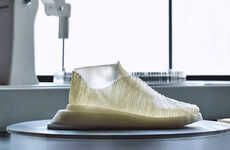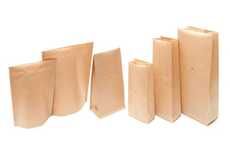WillowFlex Aims to Make the Future of 3D Printing Sustainable
Laura McQuarrie — July 29, 2015 — Eco
References: kickstarter & 3dprint
As much as the future of rapid prototyping with 3D printing looks bright, not all printing filaments are sustainable like this one from WillowFlex.
This additive manufacturing material uses a base of non-GMO corn starch to form an elastomeric bioplastic from compostable raw materials. After a 3D-printed creation has served its purpose, the materials can be set in the ground to decompose for a number of months. It's described that WillowFlex has the ability to "set a new baseline for filaments used in sensitive environments such as schools, homes and kitchen, and medical applications."
Other noteworthy eco-friendly printing filaments that are beginning to emerge include Agridust made from food waste, Refil made from used car dashboards and PET bottles and 3D Systems' water-soluable Infinity Rinse-Away.
This additive manufacturing material uses a base of non-GMO corn starch to form an elastomeric bioplastic from compostable raw materials. After a 3D-printed creation has served its purpose, the materials can be set in the ground to decompose for a number of months. It's described that WillowFlex has the ability to "set a new baseline for filaments used in sensitive environments such as schools, homes and kitchen, and medical applications."
Other noteworthy eco-friendly printing filaments that are beginning to emerge include Agridust made from food waste, Refil made from used car dashboards and PET bottles and 3D Systems' water-soluable Infinity Rinse-Away.
Trend Themes
1. Compostable 3D Printing Filaments - The use of compostable raw materials as a base for 3D printing filaments opens up opportunities for eco-friendly and sustainable manufacturing processes.
2. Eco-friendly Additive Manufacturing - The emergence of printing filaments made from food waste or recycled materials indicates a growing trend towards more environmentally-friendly additive manufacturing methods.
3. Biodegradable 3D Printed Products - The ability to decompose 3D printed products made from compostable filaments offers new opportunities in creating sustainable products for sensitive environments such as schools, homes, and healthcare settings.
Industry Implications
1. Manufacturing - Manufacturing industries can innovate by exploring the use of compostable filaments in 3D printing to create sustainable products and reduce waste.
2. Healthcare - Hospitals and healthcare facilities can explore the use of compostable filaments in 3D printing to create eco-friendly medical tools and devices.
3. Education - Educational institutions can use compostable 3D printing filaments to create eco-friendly classroom materials and reduce their environmental impact.
2.1
Score
Popularity
Activity
Freshness






















